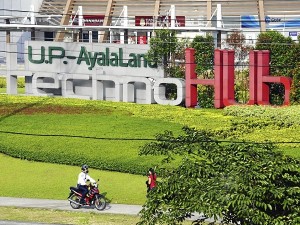
Claro dG. Cordero Jr., Jones Lang LaSalle Leechiu’s head of research, consulting and valuation in the Philippines, in his analysis titled “Metro Manila’s Emerging Urban Districts’ Success Factors Digest” published internationally by JLL, cited these three factors have prompted developers to make use of formerly idle land, such as those intended for military installations, old industrial facilities and reclaimed areas to house new communities to cater to the growing demand for a “live-work-play” environment.
Cordero revealed to Inquirer Property that there are now about 900 hectares (or 9 million square meters) of prime developed land located in 18 emerging urban districts (EUDs) within the geographical borders of Metro Manila. The 18 emerging urban districts are:
• UP Techno Hub;
• Eton Cyberpod Centris;
• Eastwood City;
• Araneta Cyberpark;
• Greenhills Redevelopment;
• Rockwell BPO Complex;
• Edsa Central;
• Robinsons Cyberpark;
• Century City;
• McKinley Hill;
• SM Mall of Asia Complex;
• Metropolitan Business Park;
• Newport City;
• Aseana IT Business Park;
• Asiaworld City;
• Madrigal Business Park; and
• Filinvest Corporate City.
“The growing shift of interest and activities towards the various EUDs across Metro Manila is the primary factor for a construction boom in the last decade as the growth in supply of key property segments (office, residential and retail) in these districts outpaced that of the traditional CBDs,” Cordero told Inquirer Property.
Cordero added that these emerging districts have presented themselves as alternative locations with cheaper rents and prices than those of traditional CBDs.
Cordero cited the EUDs as the primary reasons for the construction boom.
Cordero furnished Inquirer Property the breakdown of the reasons for the growing interest on EUDs. He enumerated what have made these urban districts successful, and their evolution and implications to Metro Manila’s real estate landscape:
1 The presence of a well-designed community masterplan ensures a balanced mix and growth of different property developments within the district.
2 Single ownership of the urban district allows for a more controlled and balanced development. The new urban districts in Metro Manila (except those that were introduced prior to 1997) are typically controlled by a single developer;
3 Lower business costs. The relatively low rents in these urban districts are complemented by the presence of incentives in the form of tax holidays on income and the importation of goods;
4 The advent of new and efficient technologies in building and property management has paved the way for build-to-suit developments (characterized by higher technical specifications, lower cost space and larger floor plates).
5 The completion of new modes of transport and transport corridors has enhanced the movement within and into these established business districts. The majority of the existing urban districts are located along these corridors which give good connections to the traditional business districts.